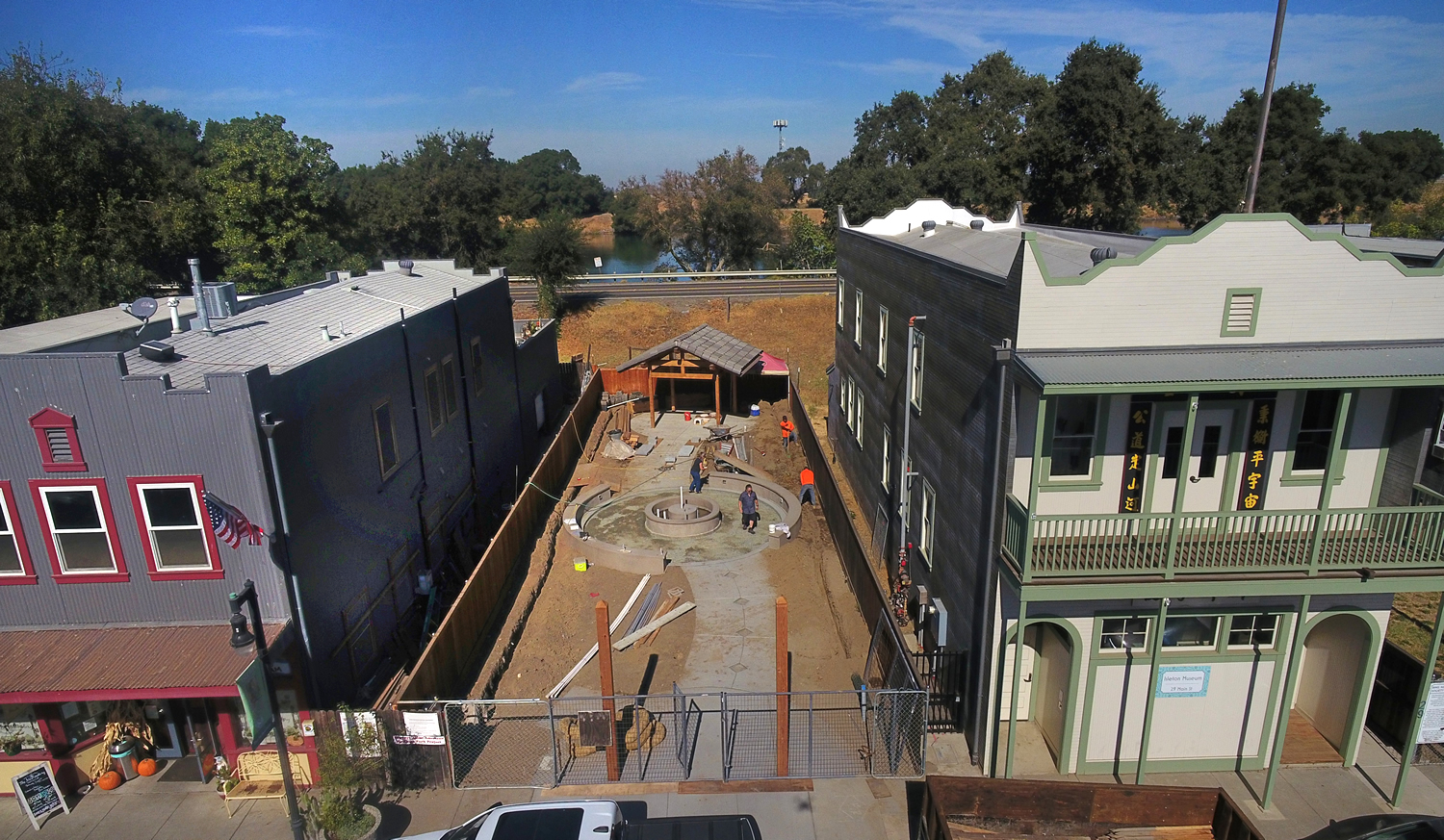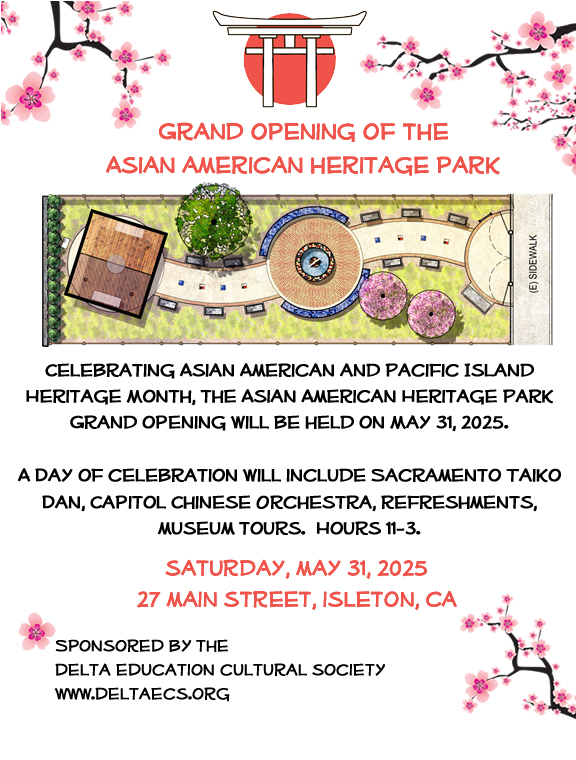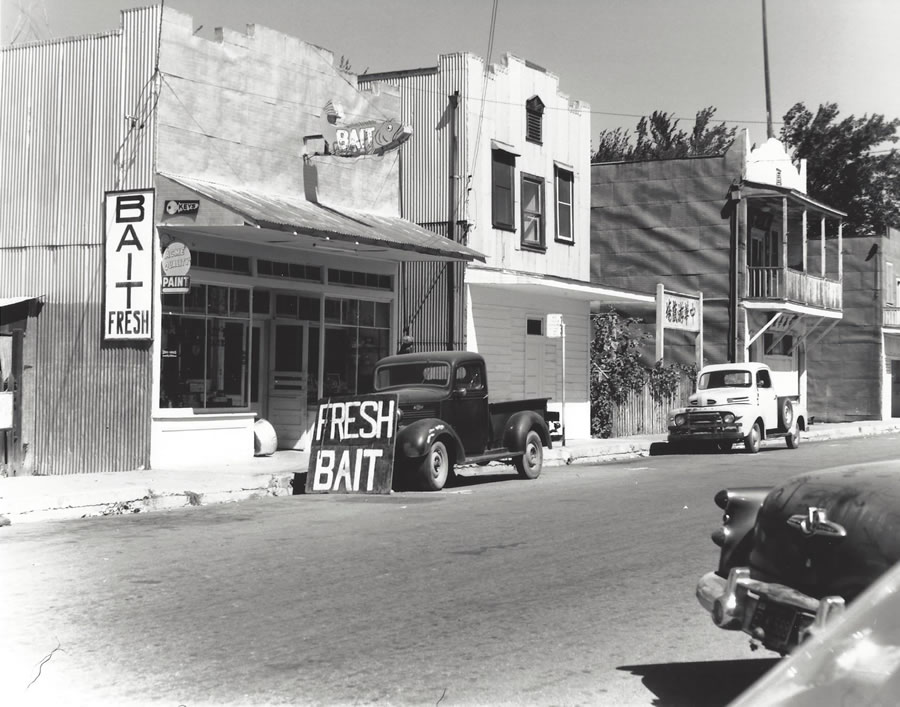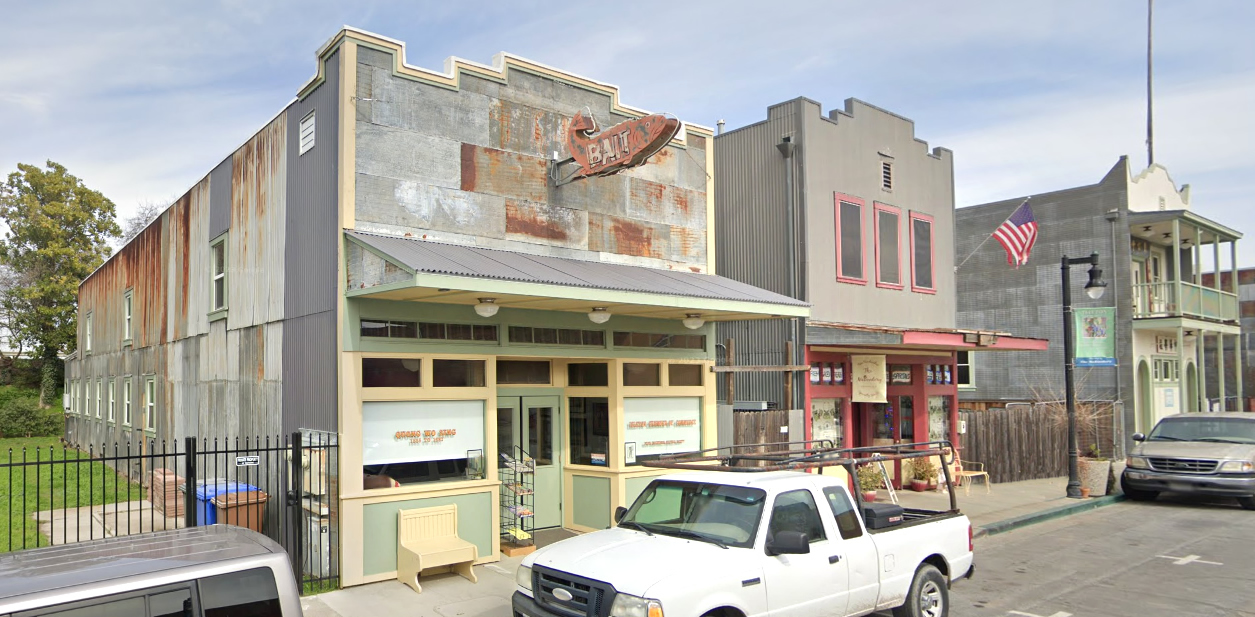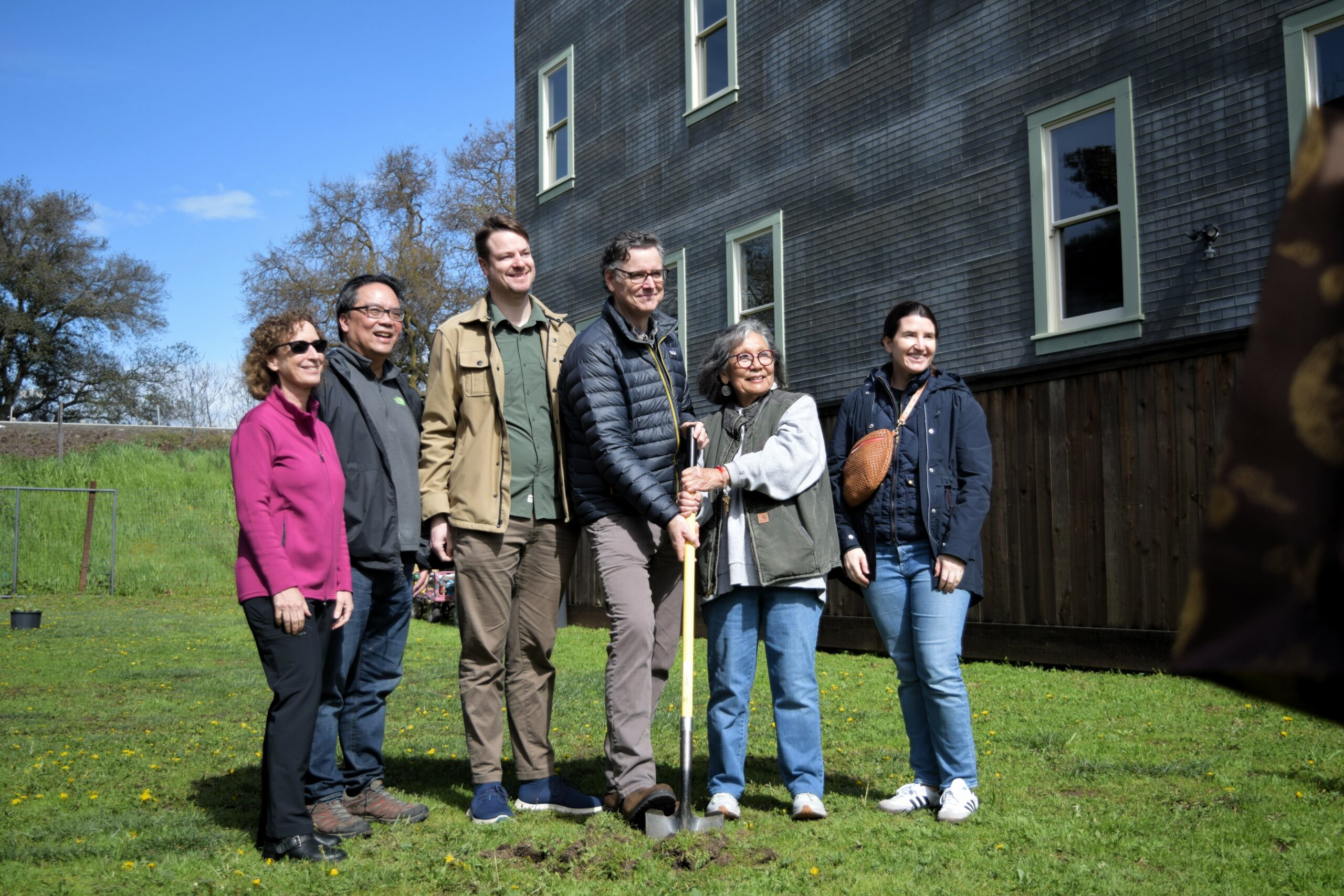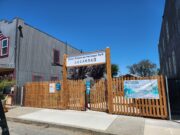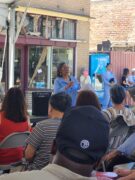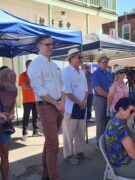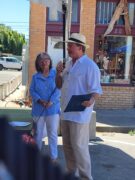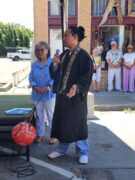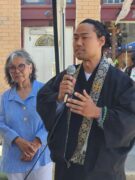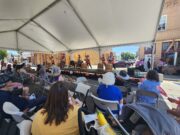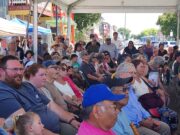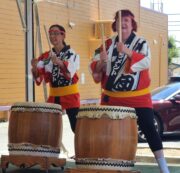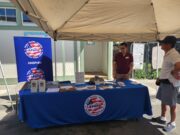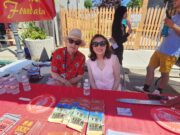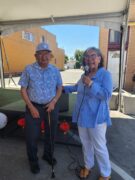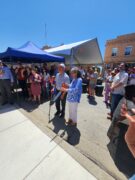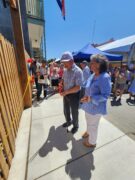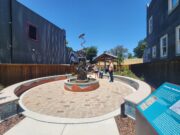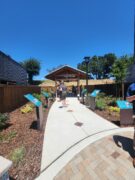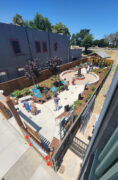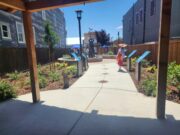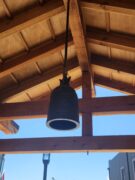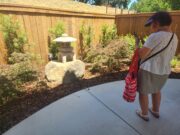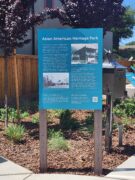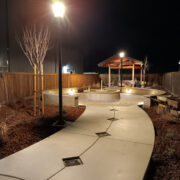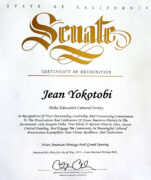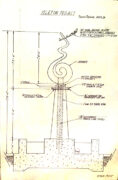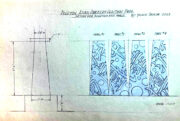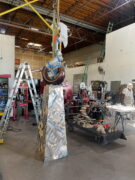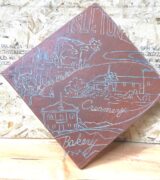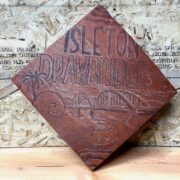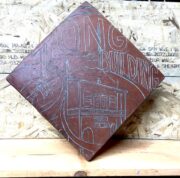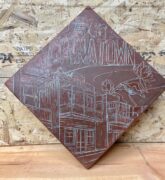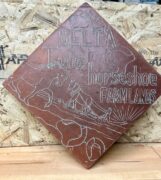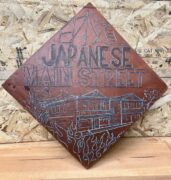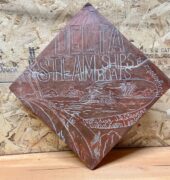
In the late 1800s and early 1900s, the Chinese and Japanese starting settling into Isleton, first the Chinese coming from the gold rush and building of the levees and railroad. The Japanese came to Isleton later seeking opportunities for jobs and prosperity. In 1915, a fire consumed the original Asian settlement. The Asians were moved to their current location which is named the Asian American Historic District which was placed on the National Registry for Historic Places in 1993.
In 1926, another fire swept through the community. It was quickly rebuilt and many of the original buildings are standing now, some as contributors to the historic district and some not. The two block area is divided into China town and Japan town.The two communities coexisted together till World War II when the Japanese were removed and interned in relocation camps. After War II, many of the inhabitants of the Japanese community did not return due to many of their buildings being occupied by other people. Today we have many photos about the life in the Asian American community of Isleton. Some of these photos are exhibited in the Isleton Historical Society Museum. Even though schools were segregated at that time in Isleton, the Chinese, Japanese, Portuguese, Filipino, Indians, etc., all worked, played and lived together peacefully. But history tells us a different story. Many of these communities came to where they are through struggles and challenges.
The Asian community had more laws passed against them than any other culture in the United State. The laws were passed for various reasons but mostly for anti-Asian sentiments based on economic competition, prejudice of the Asian community achieving personal and financial success through hard work and sacrifice. Laws such as the Chinese Exclusion Act were passed to restrict the number of Chinese coming in from China. The Alien Land and Law Act was passed to prevent the increase in land ownership for the Asians.
There were many more discriminatory laws passed but the most unjust and a violation of the constitution was the internment of the Japanese Americans during WWII because of war hysteria, racial prejudice and politics. The majority of the Japanese interned were US citizens. They lost property, their friends, ripped from their families, and loss of economic stability and most importantly, loss of freedom. The Asian American Heritage Park comes as a reminder of our history, not to repeat history but to honor those who sacrificed and died for us in order to make a stronger and better place for the next generation.
GROUNDBREAKING CEREMONY
The photo (left) is of the March 2024 groundbreaking ceremony for the park. The ceremony took place during the 2024 Isleton Asian Festival.
Photo left to right: Sharon Sprowls, Greg Chew, Nathanael Gray, Campbell Ingram, Jean Yokotobi, Maya Garrett
Park Grand Opening - May 31, 2025
The Asian American Heritage Park held the Grand Opening on Saturday, May 31, 2025. This park honors Asian roots in the town of Isleton, CA. The ceremony took place with more than 200 visitors to attend the ribbon cutting. The park was conceived and developed by Jean Yokotobi, who donated the land for the park and oversaw fund development, design and construction. Jean explained that it took 15 years to get this achieved. The park was designed by RHAA Landscape Architects and Planners. The design aimed to mimic a river moving visitors through the park. There are mosaics which represent Asian American history of the region. Artist Yoshio Taylor created the fountain sculpture along with the scenic extruded clay tiles around the benches. Jean was honored to have Yoshiki Oshima, a 99 year old local, as the ceremonial ribbon cutter. The site was once Chinese children's playground. The park, located at 25 Main Street, will be open 11:00 am to 5:00 pm daily. Visitors may also want to visit the Isleton Museum next door at 29 Main Street.
